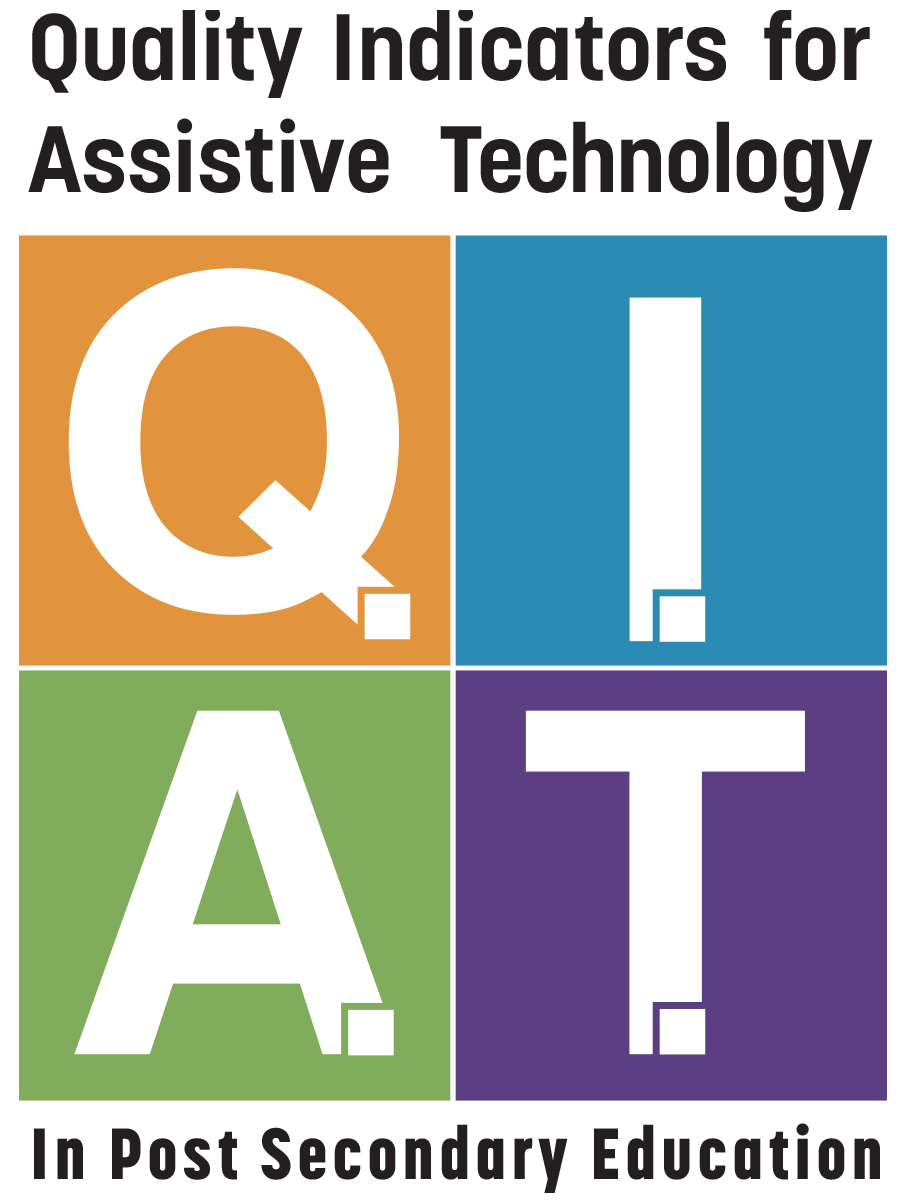One of the products of the QIAT-PS project is a set of statements that describe the characteristics of high quality assistive technology services provided to students in post-secondary educational environments. The indicators are divided into five areas of concern. And in this video, we’ll address each of them in summary as well as the indicators associated with each area. If you’d like to take a look at the full indicator document, you can find it elsewhere on the QIAT-PS Website. The first area in the QIAT-PS indicators is awareness and eligibility. This area describes the kinds of things that can be done to make sure that students with disabilities are aware of assistive technology services on the campus and know how to get access to them. The indicators themselves include ensuring that promotional materials and awareness materials address assistive technology and that there are in-house referral systems for AT services and intake questions that address the student’s past and potential use of assistive technology. The final indicator in this area addresses the need for all information technology to be accessible so that students can get this kind of awareness information. Planning and implementation is the second area in the QIAT-PS indicators. And it talks about the things that need to be done to make sure that students are able to use their assistive technology devices as intended in the classroom and other campus settings. The indicators address the systems for identifying a student’s need for accommodations and the specific accommodations they may need, systems for monitoring student performance in the use of assistive technology, integration of student-owned assistive technology into the educational program. And also systems to facilitate problem-solving when things don’t go as planned. Evaluation of effectiveness addresses activities that programs can do to ensure that their assistive technology services are effective and as efficient as possible. These actions include monitoring not only academic environments, but also things such as physical access and campus attitude. The indicators discuss the need for planning to evaluate AT services and AT device use by students. Looking at that data that is collected during the evaluation and making adjustments to the program based on that data review. Professional development and training includes training efforts for all staff and all players in the assistive technology program. It includes indicators such as ensuring that professional development is available to all those who need it including the wider institutional audience and students who use assistive technology and that that professional development is based on adult learning models and aligned with other agency initiatives. The final area of quality indicators in the QIAT-PS project defines the administrative supports that are necessary in order to ensure continuity in programs and involves the development of policies and procedures and other supports needed in order to maintain and improve assistive technology programs at the post-secondary level. The indicators address procedural guidelines and ensuring that they are broadly disseminated. They suggest that programs need a systematic AT grievance or complaint procedure when students are dissatisfied with the services that they are getting and that it is the administration’s role to ensure that qualified support persons are available in an AT program and also the budgeting and financial resources necessary to operate the program. In the next video we’ll take a look at a tool that was developed using the QIAT-PS indicators and see how it can be used to help evaluate assistive technology programs at the post-secondary level.
An Introduction to QIAT-PS
No Comments
No comments yet.
Sorry, the comment form is closed at this time.

Posted in by Robin Jones on January 28, 2014